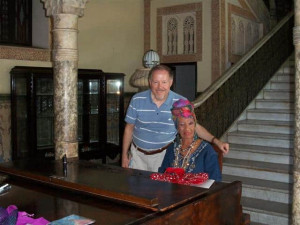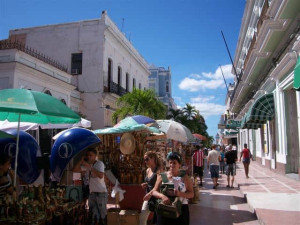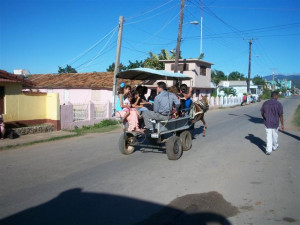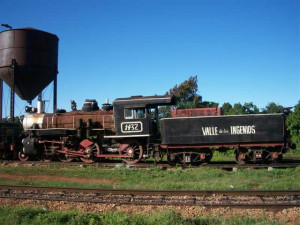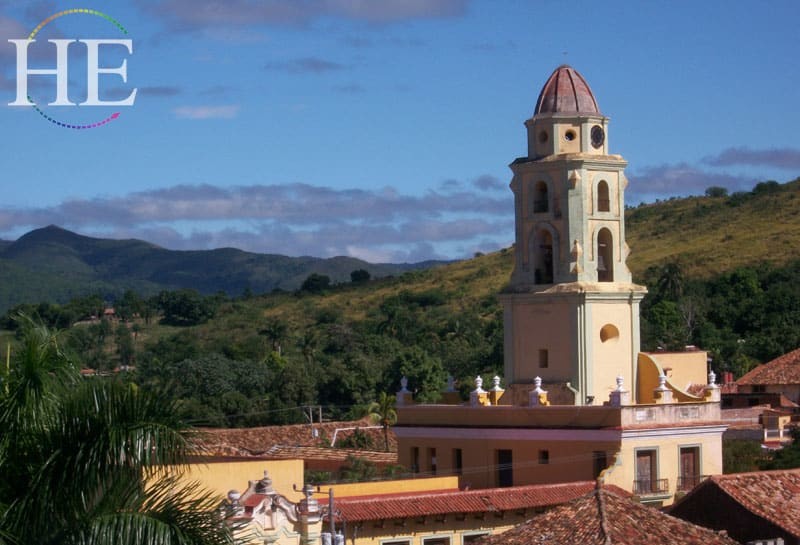
By Philip Sheldon, CEO
This is the second in a two-part series. If you missed Part 1, clicke HERE.
In the middle of our week-long humanitarian trip to Cuba we took a two-night “road trip” to see a portion of the countryside and the Caribbean coastal port cities of Cienfuegos and Trinidad. During our brief stop in Cienfuegos, we walked along the main shopping street and in the main square, surrounded by a church, a professional theatre, and a museum. On the surface anyway, this city seems to have achieved a higher level of restoration than Havana.
We had a special treat in Cienfuegos when we went to a room of the museum with great acoustics, and heard a concert by about 20 professional singers who specialize in Renaissance a cappella music and contemporary songs from Cuba and elsewhere in Latin America. I also got to meet a traditionally-dressed black woman who has been singing in an old Cienfuegos mansion, Palacio de Valle, for decades. I first met her in 2000 and was pleased to see that she is still at her piano, entertaining visitors with a big smile and a bigger voice!
From Cienfuegos, we drove along the Caribbean coast to Trinidad. This small city has received UNESCO’s World Heritage Site designation due to its several blocks of low-rise colonial-era buildings. As in Havana, many have been beautifully restored (including our hotel, the Iberostar), but every block also has numerous dilapidated structures. Trinidad was one of Cuba’s first centers for the cultivation of sugar, so it was a very rich city until the sugar planters moved their operations to the plains of central Cuba. Left behind in Trinidad though are extravagant homes, as well as plantation houses (and a steam railway) in the nearby “Valley of the Sugar Mills”. One morning we spent an hour watching crews weld together the smokestack of one of the century-old steam engines, then we rode in a restored open rail car about 20 kilometers into the countryside.
Our hotel was across the street from Trinidad’s Central Park, which was lively during the day with boys on skateboards and roller blades, and at night with singers strumming guitars for friends, and lovers on benches in the darker corners of the park.
Just up from the town’s largest church is a set of steps with a level stretch in the middle. Every night there is a salsa dance party there, and the town comes out to watch, seated around small tables or on the steps. It’s quite a friendly crowd, and both nights we were there members of our group had a chance to chat with local residents. A couple of gay guys and their well-dressed female friend invited me to “las Cuevas” or “the Caves”. I had no idea what that meant, but I followed them along a winding road up the mountain, and saw a large crowd at the top gathered around the entrance to a cave. There was a large sign overhead announcing “Disco Ayala.”
My three Trinidad friends and I entered the mouth of the cave, and we went down a long set of stairs until we got to the entrance of a huge room filled with perhaps 400-500 people. Most were probably in their 20s or 30s, and both the men and women had clearly dressed up for their night out. We stayed almost up to the closing time of 3 am, then took a run-down Russian Lada taxi back down to the town. (Only one door worked for the back seat, and the driver had to open the hood and turn something to start the engine, but it saved us the walk back to town.)
We got out of the taxi opposite our hotel, at a 24-hour restaurant / mini-market, full of loud revelers from the disco. We watched the crowds come and go for an hour or so until we walked back through the park, and I wished my friends good night before returning to my room for 2 hours of sleep. All-in-all, it was an exhausting evening, but an unforgettable chance for an authentic Cuban experience alongside new Cuban friends.

